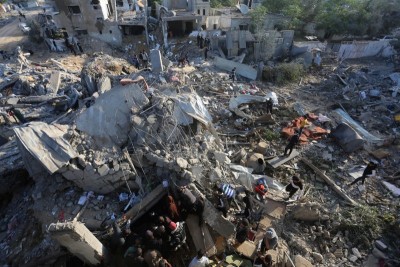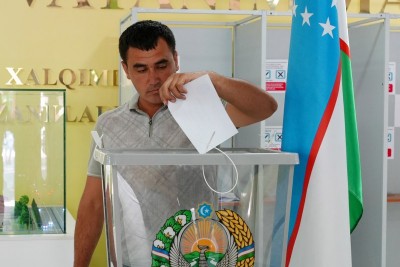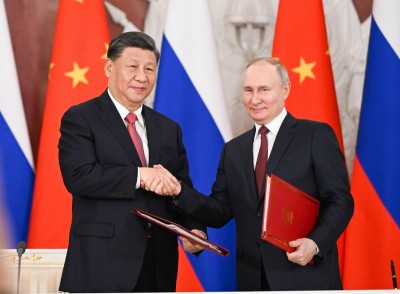
Deputy UN chief presents new report on global migrant trends
“When we get into a period of dealing with the migration and refugee issues, it’s important that we have the facts,” Jan Eliasson told reporters at a press briefing, at UN Headquarters, thanking the UN Department of Economic and Social Affairs (DESA) for producing the latest international migration report.
The senior UN official was speaking alongside Karen AbuZayd, the new Special Adviser on a meeting scheduled next September called the Summit on Addressing Large Movements of Refugees and Migrants, as well as Bela Hovy, from DESA’s Population Division.
“The number of international migrants worldwide has continued to grow,” noted the Deputy Secretary-General. “Back in 2000, there were 173 million international migrants, in 2010 there were 222 million, and this past year in 2015, 244 million migrants.”
These figures, Eliasson explained, also include 20 million refugees for the purpose of “statistical correctness” and despite there being a “different legal regime” for them as compared to migrants.
“Not included in this figure […] are around 40 million internally displaced people – refugees inside a country,” he added.
Offering additional details, Hovy said that the motive of migration is not taken into account when DESA produces statistics on international migrants, and that the numbers include people who may have arrived to their new place of residence 10 to 40 years ago.
According to the Trends in International Migrant Stock: The 2015 Revision, nearly two thirds of international migrants live in Europe (76 million) or Asia (75 million). North America has the third largest number of international migrants (54 million), and globally, women comprise half of all of them.
Meanwhile, two thirds of all international migrants were reported to be living in only 20 countries, with the largest number in the United States – about a fifth of the world’s total migrants. The next in line is Germany, followed by Russia, and Saudi Arabia.
Turning to refugees, they are mainly in Pakistan, Lebanon, Iran, Jordan – and come mainly from three countries – Syria, Afghanistan and Somalia.
“What I found particularly interesting is how important migration has been for population growth, which is sorely needed in certain parts of the world,” Eliasson stated.
He added, “In Europe, the size of the population would have fallen between 2000 to 2015, in the absence of positive net migration, so here is something related to what I would call the positive narrative about migration and refugees – the contribution to the demographics […] and of course what they do in terms of remittances.”
The Deputy Secretary-General highlighted that remittances to international migrants’ countries of origin is about two or three times bigger than the official development assistance in the world, which supports many health and education efforts worldwide.
“We have a series of very important meetings and events which relate to the political significance of migration and refugees,” noted Eliasson, recalling that in November, Secretary-General Ban Ki-moon presented a road map for the work on migration and refugees.
One of the most important global events on refugee and migrant flows will take place on 19 September in New York, led by AbuZayd, who will begin meeting with Member States starting next month and work closely with DESA and other UN partners in the lead up to it.
“The summit is intended to work towards solutions as a global community,” AbuZayd underlined.
He added, “Because I think that many countries that may not have much to do with migration or with refugees may also want to come in and contribute and participate in this action working toward solving this problem.”
Photo: UNICEF/Ashley Gilbertson VII/www.justearthnews.com
Support Our Journalism
We cannot do without you.. your contribution supports unbiased journalism
IBNS is not driven by any ism- not wokeism, not racism, not skewed secularism, not hyper right-wing or left liberal ideals, nor by any hardline religious beliefs or hyper nationalism. We want to serve you good old objective news, as they are. We do not judge or preach. We let people decide for themselves. We only try to present factual and well-sourced news.







